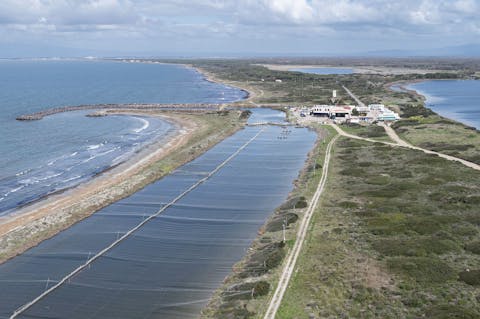Nieddittas: Territory, Biodiversity, and Sustainable Projects in the Heart of Oristano | Olianas
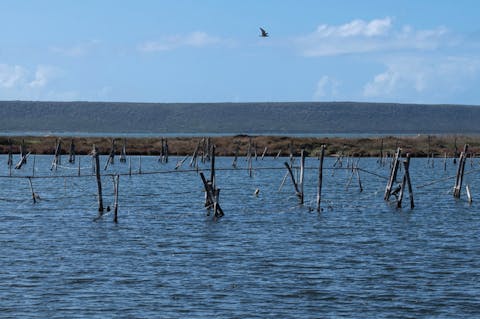
Environments and nature
Nieddittas: Territory, Biodiversity, and Sustainable Projects in the Heart of Oristano
by Jessica Cani
"It was the early seventies, and nine very young fishermen were eager to experiment," Alessia Rosas, guide and narrator of Nieddittas, tells me with a smile as we board a minibus to explore Corru Mannu, in the Oristano area. In 1967, those young men founded the cooperative we now know as Nieddittas: a tribute to the Sardinian word nieddu (black), which evokes the appearance of mussel shells, and to the small size of the mollusks.
At the time, no one imagined that a true mussel farm could thrive here, in a brackish pond, just a few kilometers from the coast but also close to the city. Yet the young men began experimenting with a series of rudimentary nurseries: wooden poles driven into the seabed, nets supporting the “socks” where the young mussels would find their first home.
The results were soon visible: these first trials sparked growing interest, leading in the 1980s to the construction of a purification center to ensure the highest quality of mussels. Then came the “open sea” farms in the Gulf of Oristano, cementing Nieddittas’ reputation as a leading force in Sardinian mussel farming. Today, the company employs more than 150 permanent staff — a number that rises above 200 during summer and holiday periods — and has earned a prominent role in the national distribution of seafood products.
"If you like, we can also get off and see the canal, the mussel farm, and the gilthead seabream up close," Alessia suggests as the minibus stops on a dirt road crossing the Corru Mannu wetland. Visitors have two options: stay on the minibus and follow a guided route, or hop on one of the e-bikes provided by Nieddittas to explore the biodiversity of the area at a slower pace.
The moment I step onto the ground, we are struck by the silence: only faint background sounds, the gentle lapping of water, and the call of some water birds on the horizon. The landscape looks like a mosaic: the canal where “semi-wild” gilthead seabream swim, raised at low density to ensure flavor and well-being, and stretches of glasswort, green in spring and reddish in autumn, tinting the scenery with surprising shades.
"It is a wetland of international importance," the guide explains. "We are, in fact, within an area protected by the Ramsar Convention. Here, between brackish waters and sandy soils, survives a universe of birds including flamingos, cormorants, black-winged stilts, and wild ducks." A pause, a glance into the distance. "That, for example, is a young flamingo, you can tell by its gray plumage. Over time and with proper feeding, its feathers will turn the classic bright pink."
For a nature and photography enthusiast, the visit becomes a small safari. The route also reaches an artificial islet, created with jute sacks and crushed mussel shells: a perfect nesting site for gulls, safe from dangers and curious onlookers. "One should not think that humans are always in conflict with nature," Alessia emphasizes. "Here we try to show how intelligent intervention can enhance biodiversity and enrich the ecosystem."
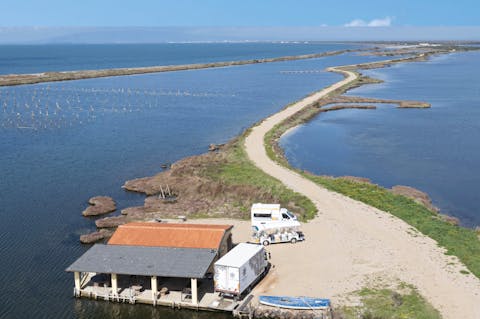
The nature trail initiative was launched in 2023. “We participated in a FEAMP grant, which allowed us to purchase the minibus and electric bikes for guided tours.” The company also collaborates with LIPU (Italian League for Bird Protection), which assists the staff in identifying bird species.
The project is not limited to tourists, as our guide explains: “We also invite elementary and middle schools, because for children, seeing the place where mussels are grown is an educational experience. They understand that food doesn’t magically appear on supermarket shelves but comes from a ‘world’ behind it: nets, seawater, operators, health checks. And then there’s the entire beauty of a territory they suddenly feel responsible for.”
It is clear that in Nieddittas’ activity, behind the finished, packaged, and well-presented product, there is a continuous commitment to safeguarding Sardinia’s natural heritage and fostering a more responsible collective awareness. “We have the state concession for this area,” the staff reiterates, “so it is our responsibility to maintain roads and canals, but also to seek solutions that make production compatible with environmental protection.”
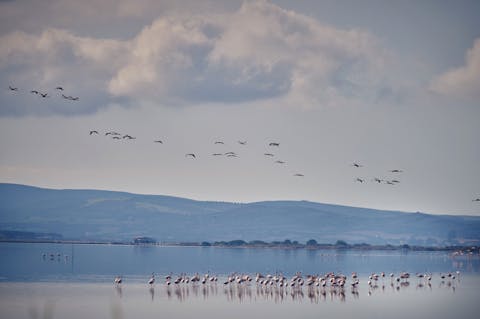
At the heart of Nieddittas’ activity are mussels, particularly Mytilus galloprovincialis. “Most of our mussels are born in the Gulf of Oristano, between Torre Grande and Capo San Marco,” explains Alessia. “To these, we also add mussels from other areas of the Mediterranean: Spain, Greece… We bring them here while still young so that they spend at least 28 days in our waters, filtering and absorbing the local environmental characteristics.”
Processing involves a crucial step in the purification center, where the mussels stay in seawater tanks, constantly monitored for microbiological safety. “We carry out strict monitoring,” says one operator, “so that the final product is safe for consumption. Once quality is verified, the mussels are packaged and distributed both in Sardinia and throughout Italy.”
But mussels are not the only focus. In Terralba, another hub managed by Nieddittas handles other seafood: gilthead seabream, sea bass, mullets, swordfish, and even tuna, purchased from local fishermen. “We supply several fishmongers and restaurants, but also offer a home delivery service: we want to provide a wide range of seafood to those seeking quality and freshness.” Here, one of Sardinia’s most famous specialties also appears: mullet bottarga, made from salted and aged fish roe.
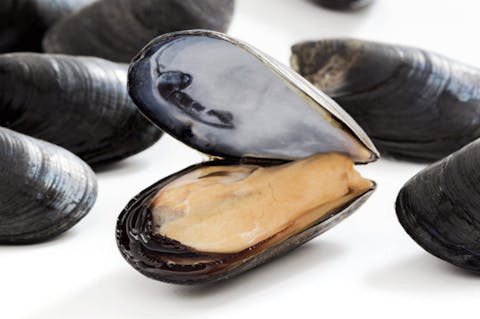
One of the most curious moments of the tour comes when the guide points out large baskets full of mussels that are damaged or too small to sell. “We call them scraps,” she explains, “because, in a sense, they are production waste — mussels that do not meet the standards for commercial sale.”
With a focus on reducing waste, Nieddittas has found a clever way to reuse these scraps: they are fed to the gilthead seabream raised in the Corru Mannu canals. “In the wild, seabream gladly feed on mussels,” the guide adds. “We thought of replicating the same mechanism. The fish peck at the shells, eat the mollusk inside, and in this way we achieve two goals: zero waste and a completely natural diet.”
The final result is firm, flavorful fish meat, comparable to that of wild gilthead seabream. Additionally, the farming is semi-intensive, at low density, allowing the fish to move freely. “We want them to grow healthy, without stress, to offer a quality product.”
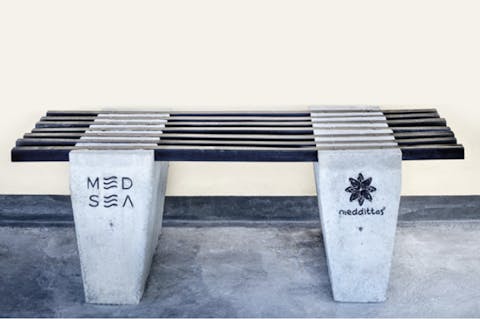
"In our vision," the company explains, "even the shell, after the seabream has eaten the mollusk, can have a second life." This is where the most innovative part of the Nieddittas project comes into play: circular economy, including the recovery and reuse of processing residues.
A striking example is the collaboration with Mondo, an international leader in the production of athletics surfaces. “Together with them, we developed a mixture that includes crushed mussel shells,” they explain. “The calcium carbonate becomes an integral part of the surface, making it durable but also more environmentally sustainable. We are proud that it was tested in a sports context of global resonance, such as the 2024 Olympics.”
Inside the facility, one cannot miss the eco-friendly bench, the result of a project with the University of Cagliari and with the contribution of MEDSEA, a non-profit dedicated to protecting the Mediterranean. “We used the calcium carbonate from the shells to make an alternative cement,” they explain, “combined with recycled plastic and byssus (the outer filaments of mussels) as reinforcement. It is a prototype demonstrating the potential of what is called ‘waste.’”
“We are already working on new ideas,” they say enthusiastically. “Bike racks, special pavements, eco-design objects. Every element we produce is a piece to close the circle: what once ended up in the landfill returns into circulation, taking on new forms and functions.”
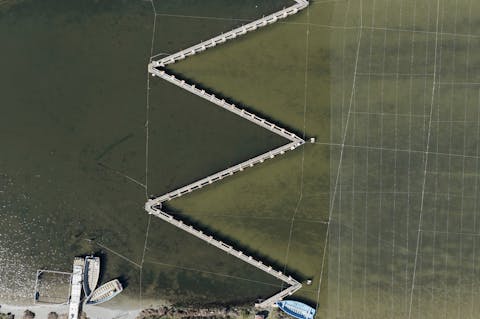
It is important to remember that the entire Corru Mannu trail is part of the wetlands protected under the Ramsar Convention, an international agreement established to safeguard ecologically significant aquatic habitats. “Here, freshwater meets saltwater, creating a mix of salinity that supports the life of many species,” Alessia explains. “There is an enormous variety of plants, called psammophiles, that have adapted to grow on sandy soils. Think of sea thistle and pancratium, true specialists of these coasts.”
During the visit, binoculars might reveal pale pink flamingos in the distance, cormorants gathering in flocks at sunset, and wild ducks splashing among the reeds. “It’s a paradise for birdwatchers,” assures one visitor, camera in hand. “Many don’t realize that Sardinia has this side too—not just Caribbean-like beaches but also wetlands teeming with life.”
Nieddittas, for its part, emphasizes the need to protect and preserve local biodiversity. Beyond monitoring the nets and canals, there is constant observation of the impact of farming on wild birds and fish. “We conduct water tests almost every day,” they explain. “If the environment is balanced, our activity benefits as well. Let’s not forget that the mussel is a filter feeder, and in clean waters its quality is significantly higher.”
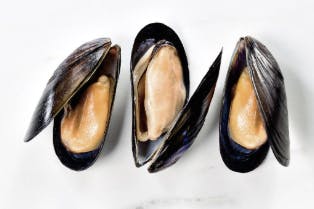
After so much exploring, it’s natural to ask, “Now, how do I taste these famous Nieddittas mussels?” Among the most appreciated experiences by visitors is the tasting organized at the end of the tour, especially in summer when the sun sets and the lagoon is painted in shades of orange and purple.
“We set up a small food truck,” explains the chef in charge of preparations, “and serve seasonal recipes based on mussels. For example, right now we like to offer them in a salad with fennel and oranges, pairing the brininess of the mollusk with the freshness of citrus. In summer, fried mussels with flavored mayonnaise are a must, but we also prepare lighter versions with green apples and wild vegetables.”
The dishes are often paired with local white wines, such as a Sardinian Vermentino, which enhances the sea-salty notes of the mussels. “Visitors are often surprised,” the chef adds, “because a high-quality mussel is a very versatile ingredient: it can be cooked quickly or become the star of a warm salad.”
Other specialties are also featured: shaved mullet bottarga, crushed potatoes, and light seasonings that do not overpower the natural flavor of the shellfish. “In the end, however, the star remains the Sardinian mussel,” everyone emphasizes. “It’s what gave us our name and our fortune.”
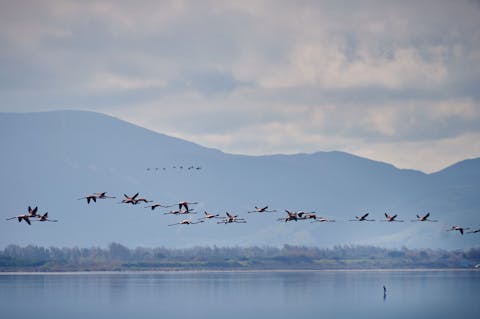
Nieddittas is far more than a food brand: it is an open-air experiment where the concept of “maximizing resources” is translated into concrete solutions, from purification to circular economy.
“There are no truly lost scraps. Every crate of defective mussels becomes food for gilthead seabream; every broken shell, if recovered, can become raw material for an eco-design project. Even that simple islet in the middle of the canal shows that, with a bit of foresight, it is possible to give new life to something that seemed destined to be discarded.”
Their projects tell a story of synergy between research, industry, and respect for the territory. “We still have many ideas in the pipeline,” they admit. “It would be wonderful if cities adopted urban furniture made from mussel shells, or if other sports facilities tried our innovative materials. We hope that visitors leave not only with the memory of a delicious plate of mussels, but above all with the awareness that responsible production is possible. And that wetlands like Corru Mannu are not forgotten outskirts, but places of extraordinary biodiversity and culture.”
Corru Mannu, still unknown to most, is not just a lagoon or a shallow water area: it is a crossroads of past and future, where one starts from the present to look toward the future with foresight and social responsibility.
